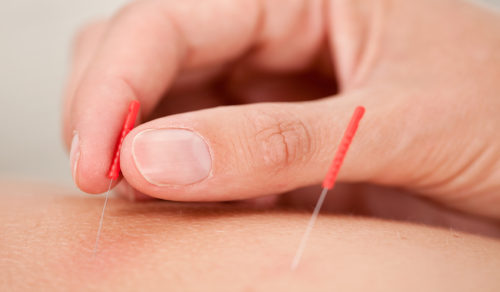10 Facts about Acupuncture
Did you know…
The practice of acupuncture, dating back to approximately 100 B.C., China, is a form of Traditional Chinese Medicine (TCM). Part of alternative medicine, acupuncture treatments are commonly known to alleviate and relieve lower back pain, headaches, neck pain, and other muscular/joint pains. Though the practice fell out of favour with the Chinese in the latter part of the 17th c., as a result of the growing popularity of empirical medicine and science-based medical treatments and theories, acupuncture became more widely accepted as an alternative to or in conjunction with science-based treatments, when it was introduced to the western world. Whether you have or have not experienced the healing power of acupuncture, these 10 facts about this ancient treatment might surprise you.
1. The word acupuncture was derived in the 17th c., and means needle (acu) and to prick (punura).
2. In June 1979, after holding an acupuncture symposium, the World Health Organization’s (WHO) published results surmised that the TCM could potentially treat 43 diseases and/or ailments. However, because results of this symposium were inconclusive, it was suggested that more research be conducted to provide more sufficient findings. evidencebasedacupuncture.org

3. Essential to the practice of acupuncture is qi, or the vital energy and life force, which flows through the body, creating harmony (tao). Depending on your qi, your body is in a constant state of flux, or balance, and depending upon factors which affect your body, your qi is in a constant state of flux.
The harmonious balance between body and forces of yin (material) and yang (immaterial) which affect the body, and therefore, which affect the qi, is essential for the flow of energy (essentially, qi) to establish harmony with each part of the body. Disease is caused when the qi is disrupted. takingcharge.csh.umn.edu
4. Acupuncture’s ‘debut’ exposure to the western world occurred in 1971, when New York Times‘ journalist, James Reston, suffered from appendicitis while accompanying the 37th President of the United States, Richard Nixon, on a trip to China. Upon his return, Reston penned the piece, Now, About My Operation in Peking, stating, that after his operation, he was “in considerable discomfort if not pain during the second night after the operation.”

Following the advice of the hospital’s acupuncturist, “Li Chang yuan, doctor of acupuncture at the hospital, with my approval, inserted three long, thin needles into the outer part of my right elbow and below my knees and manipulated them in order to stimulate the intestine and relieve the pressure and distension of the stomach.” nytimes.com/1971/07/26/archives
5. After the National Institutes of Health published a Consensus Statement in 1997, stating that acupuncture was an effective way to treat certain ailments and symptoms, “based on collected reports of clinical trials,” the WHO published a report in 2003, which listed the ailments which acupuncture was said to be effective in treating. These included: depression,
headache, knee pain, low back pain neck pain, nausea, and vomiting. apps.who.int/bookorders
6. Though the WHO concluded that acupuncture has 361 points on the body, other sources indicate that the TCM has more than 2,000 acupuncture points, which correspond with organs that are associated with the yin and yang, through which the qi flows. These channels are referred to as meridians. verywell.com

7. On April 1, 2013, the Ontario government announced that acupuncture practitioners have to register with The College of Traditional Chinese Medicine Practitioners and Acupuncturists of Ontario (CTCMPAO), which would “ensure patients receive safe, high-quality health care services.” boardofnaturalmedicine.org
8. The practice of acupuncture is a form of alternative medicine, involving the stimulation of any number of the points in the body, depending on the ailment, through the insertion of small, thin needles in the points associated with causing the pain. nccih.nih.gov
9. Acupuncture needles are so small that, when inserted just beneath the surface of the skin on the meridians which are associated with the locations of pain, they don’t cause bleeding.
10. Although there is no minimum or maximum number of treatments, the quantity of treatments variesaccording to the type of ailment and the length of time experienced.
Though to the western hemisphere, acupuncture is a relatively new treatment, and newer still is the fact that the practice of acupuncture is regulated, the basis of this TCM is widespread, and has been used by millions of people as an alternative to conventional medicine n the western world. ncbi.nlm.nih.gov
(original Article: https://villagelivingmagazine.ca/10-facts-about-acupuncture/ May 2nd 2018)


Pingback: